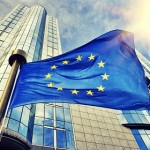The EU has finally evolved an Indo-Pacific (I-P) strategy.[1] This covers the perspective of all 27 countries, and emerges from a virtual meeting of their foreign ministers, which approved the policy on 19 April. It recommits the EU politically to the I-P region and aims to contribute to its stability, security, prosperity and sustainable development. These are anchored on ‘shared values ‘of democracy, rule of law, human rights and international law.
Better late than never. The EU is in a mood to engage, several months after France[2], Germany[3], and Netherlands[4] launched their I-P policies. The EU recognises that the I- P is important for its economic engagement, and does not want to be left out of it. The strategy is a clear recognition that EU needs to be a part of new regional and global value chains, growing international trade and investment flows which may side-step China.
The EU’s tardiness in creating consensual decisions often makes it seem like a laggard. Perhaps this is deliberate. In the I-P, the EU wants to have better partnerships, but in attaining that, it is equally important not to tread on Chinese toes. That’s akin to the German policy[5]. So, the EU policy virtually ignores China, focusing instead to engage the rest of the I-P, particularly India, ASEAN and East Asia.
The geographical spread of the strategy aligns with the Indian view that the I- P starts on the east coast of Africa, through the Pacific Ocean. This maps the colonial past, because the regional linkages that EU countries claim emanate from imperialism. The British, French, Dutch, Portuguese, the Spaniards, among others, all claim the legacy because of their colonisation. Those not part of the colonial linkages, seek only functional cooperation. In this, the EU has undoubtedly played an important role in strengthening regional organisations, like ASEAN and IORA.
This is where the EU is a bridge between the past and the present. The EU document gives primacy to implementing its contemporary global agenda, focusing on climate change, and Sustainable Development Goals. The EU takes an inclusive and broad-based approach. It commits to work with any partner who shares its principles, who have declared I-P policies, and work closely with India, ASEAN, Japan and Australia. It is not clear whether this implies that the EU as an institution will not collaborate with China and Russia, who decry the I-P concept and do not share EU’s values.
On maritime security, EU intentions are clear but its abilities are untested. Protection of maritime routes, sharing information on maritime domain awareness, better cooperation on counterterrorism, cyber security, crisis management, are positive aspects. The EU aims to expand its security and defence dialogue, and engage the ASEAN Regional Forum[6], since it is not part of the East Asia Summit. Other than France, there is no potent EU navy, but European nations can band together as they did during the anti-piracy campaign around the Gulf of Aden when EU flotillas, played a significant role.[7] It did not sustain itself unlike the Chinese and Japanese who stayed on and set up bases in Djibouti.
The EU I-P strategy is a consensual version. The German Outlook[8] is not as robust as the French policy. France is far ahead in terms of their regional presence, robust response and engagement – it is willing to engage with the Quad and in a trilateral with India and Australia, to discuss security, functional cooperation, including resilient supply chains.
With India, political engagement on trade matters can lead to a breakthrough. Having an investment agreement, which will facilitate EU FDI into India, with a trade agreement to follow, will make the I-P strategy seem meaningful.
With ASEAN the EU remains keen to expand its formal engagement. Singapore, and Vietnam[9] already have agreements with the EU but an ASEAN-EU FTA is still problematic. For some ASEAN countries, the only export that matters is palm oil. If restrictions are placed due to green considerations, then countries like Indonesia and Malaysia will lose interest in an EU agreement. Some EU countries have narrow interests and pursue large markets; they must similarly understand the concerns of the markets. Unless there is a reciprocity in this, progress will be limited, policy outlook notwithstanding.
Since not much real maritime security is expected from the EU, its engagement through sustainable and resilient FTAs and support to infrastructure in the region will be valuable. The EU-Japan connectivity partnership[10] and the EU connectivity strategy for Asia and Europe[11] has the seeds for a potent partnership.
Gurjit Singh is Former Ambassador of India to Germany, Current Chair of the CII Task Force on Asia-Africa Growth Corridor and Professor at the IIT, Indore.
This article was exclusively written for Gateway House: Indian Council on Global Relations. You can read more exclusive content here.
For interview requests with the author, or for permission to republish, please contact outreach@gatewayhouse.in.
©Copyright 2021 Gateway House: Indian Council on Global Relations. All rights reserved. Any unauthorized copying or reproduction is strictly prohibited.
References:
[1] EU Strategy for Cooperation in the Indo-Pacific, EEAS, 19 April 2021, https://eeas.europa.eu/headquarters/headquarters-homepage_en/96741/EU%20Strategy%20for%20Cooperation%20in%20the%20Indo-Pacific
[2] The Indo-Pacific region: a priority for France, France Diplomacy, April 2021, https://eeas.europa.eu/headquarters/headquarters-homepage_en/96741/EU%20Strategy%20for%20Cooperation%20in%20the%20Indo-Pacific
[3] German government adopts guidelines for the Indo-Pacific region, The Federal Government, https://www.bundesregierung.de/breg-en/news/indo-pacific-1781916
[4] Indo-Pacific: Guidelines for strengthening Dutch and EU cooperation with partners in Asia, Government Netherlands,13 November 2020, file:///C:/Users/HOME-PC/AppData/Local/Temp/Indo-Pacific+Guidelines+EN-1.pdf
[5] Gurjit Singh: Germany takes view of the Indo-Pacific, ORF, 1 October 2020, https://www.orfonline.org/expert-speak/germany-takes-view-indo-pacific/
[6] Action Document for Enhancing EU's role in multilateral fora in Asia, European Commission, https://ec.europa.eu/fpi/sites/fpi/files/ann12_action_document_for_enhancing_eus_role_in_multilateral_fora_in_asia.pdf
[7] Operation Atlanta, Countering Piracy off the Coast of Somalia, https://eunavfor.eu/
[8] Gurjit Singh: Germany takes view of the Indo-Pacific, ORF, 1 October 2020, https://www.orfonline.org/expert-speak/germany-takes-view-indo-pacific/
[9] David Hutt, Vietnam’s EU trade deal fails to inspire COVID-hit neighbours, Nikkei Asia, 25 September 2020, https://asia.nikkei.com/Economy/Trade/Vietnam-s-EU-trade-deal-fails-to-inspire-COVID-hit-neighbors?utm_campaign=RN%20Free%20newsletter&utm_medium=daily%20newsletter%20free&utm_source=NAR%20Newsletter&utm_content=article%20link&del_type=1&pub_date
[10] Mario Esteban & Ugo Armanini, The EU-Japan connectivity partnership, 4 February 2020, Royal Institute Elcano. http://www.realinstitutoelcano.org/wps/portal/rielcano_en/contenido?WCM_GLOBAL_CONTEXT=/elcano/elcano_in/zonas_in/ari12-2020-esteban-armanini-eu-japan-connectivity-partnership-sustainable-initiative-awaiting-materialisation#:~:text=The%20Partnership%20on%20Sustainable%20Connectivity%20and%20Quality%20Infrastructure%20signed%20between,and%20a%20level%2Dplaying%20field.
[11] Connecting Europe & Asia: The EU Strategy, EEAS, 26 September 2019, https://eeas.europa.eu/headquarters/headquarters-homepage/50699/connecting-europe-asia-eu-strategy_en


